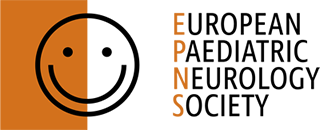Organiser: Dr Jean-Pierre Lin
Click on the link below:
If you found this interesting and want to learn more, you would have enjoyed the 3rd EPNS International Advances in Neuromodulation in Children Symposium which took place in Athens directly before the 13th EPNS Congress on 16-17 September 2019
A meeting on the latest on Advances in Neuromodulation in Children. This two day symposium covered new ground in the field of neuromodulation in children bringing together new concepts in neurophysiology, pathophysiology and neuromodulation for movement disorders and epilepsy.
Overview
Day 1
The morning concentrated on the developmental biology of scales for dystonia, chorea and ataxia in typically developing children (Deborah Sival) to illustrate how young children exhibit early physiological motor phenomena that improve with age and maturation.
The importance of the sensory system in the motor manifestations of cerebral palsy (Alexander Hoon) challenged our concepts of underlying mechanisms motor disorders in childhood followed by more formal neurophysiological assessment of somatosensory evoked potentials and corticomuscular coherence patterns in childhood dystonias (Verity McClelland).The morning concluded with an exploration of the nature of scissoring in childhood and the role of vestibular input as part of the debate ‘is this dystonia or spasticity’ (Jean-Pierre Lin).
The afternoon focused on neuroimaging and early deep brain stimulation for childhood dystonias begining with what can be learned from 18-FDGPET-CT Brain imaging (Alexander Hammers and Stavros Tsagkaris) and early deep brain stimulation in children: How early? How young? How severe? (Jean-Pierre Lin and Ata Siddiqui). Targeting deep brain stimulation: is it an art or a science? Can we improve our practice? This is interactive session between Harutomo Hasegawa (Neurosurgeon) and Daniel Lumsden (Paediatric Neurologist) got us up to speed on this complex issue. The impact of DBS on dystonic pain (Sinead Barkey) and the American Academy of Developmental Medicine and Cerebral Palsy Dystonic Cerebral Palsy Pathway (Darcy Fehlings) explored the evidence and lack of evidence for the efficacy of DBS in CP and what remains to be done.
We concluded day 1 with DBS for phantom limb pain (David Pang) and neuropsychiatric indications for DBS (Keyoumars Ashkan).
Day 2 was chaired by Sophia Varadkar and comprehensively reviewed vagus nerve stimulation for the childhood epilepsies.
We began with monitoring seizures (Amre Shahwan) and their impact in childhood (Ailsa McLellan). Then Martha Feucht took us through the history of vagus nerve stimulation and Sophia Varadkar brought us up to speed with ‘closed loop’ vagus nerve stimulation. What we have learned of the cognitive outcomes following neuromodulation for the epilepsies was discussed by Sarah Rudebeck before the lunch break.
In the afternoon, we had an interactive ‘Movement disorder or Epilepsy’ short video presentation session when short videos were presented to all delegates who voted for ‘Movement Disorder’ or ‘Epilepsy’. This was because clinical differentiation is always difficult and it allowed participants to share their videos and engage in brief discussion.
Neuromodulation for Neuroinflammation
The highlight of the two-day symposium considered new applications for neuromodulation for inflammatory disorders including the application of vagus nerve stimulation for inflammatory bowel disease (Bruno Bonaz) and DBS for FIRES (Antonio Valentin and Richard Selway) was accompanied by a general update on Neural Control of the Innate Immune System by Ming Lim.
Both days had a specific focus on clinical and neurophysiological characteristics and improved patient selection, applying the principles of precision medicine and surgery.
View the detailed program at:
http://www.epns2019.org/assets/190702-EPNS-2019_Neuromodulation-Symposium-Programme.pdf
